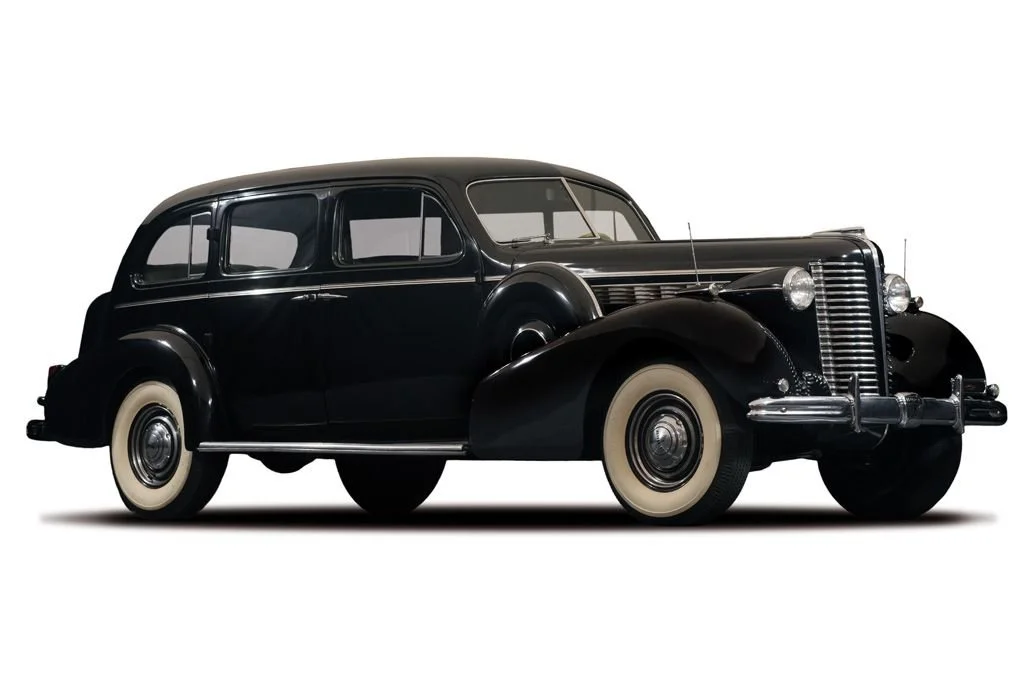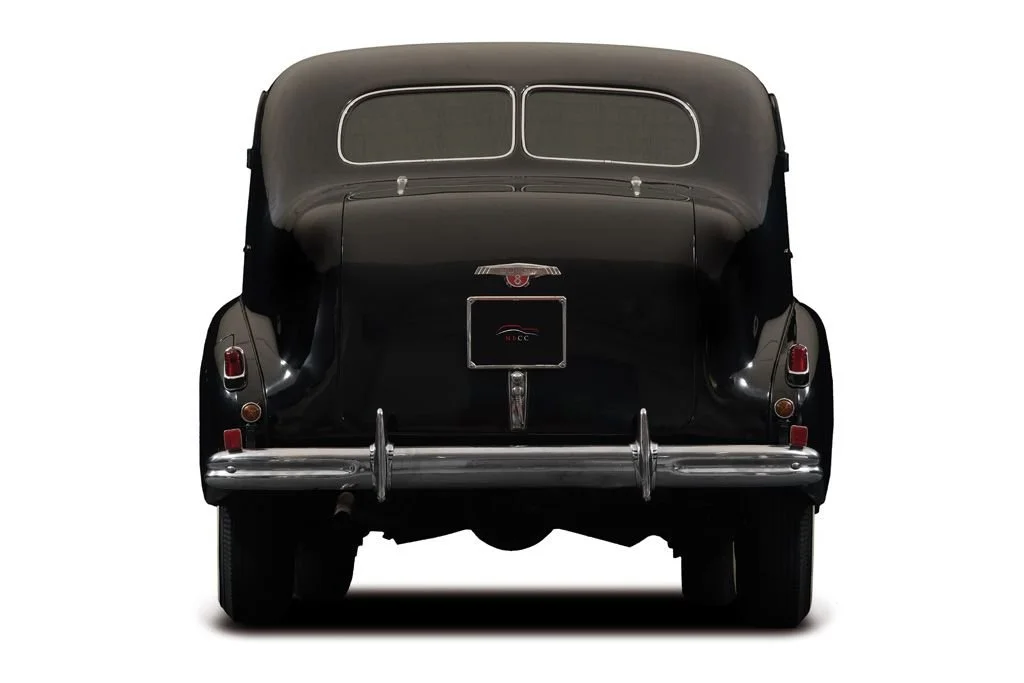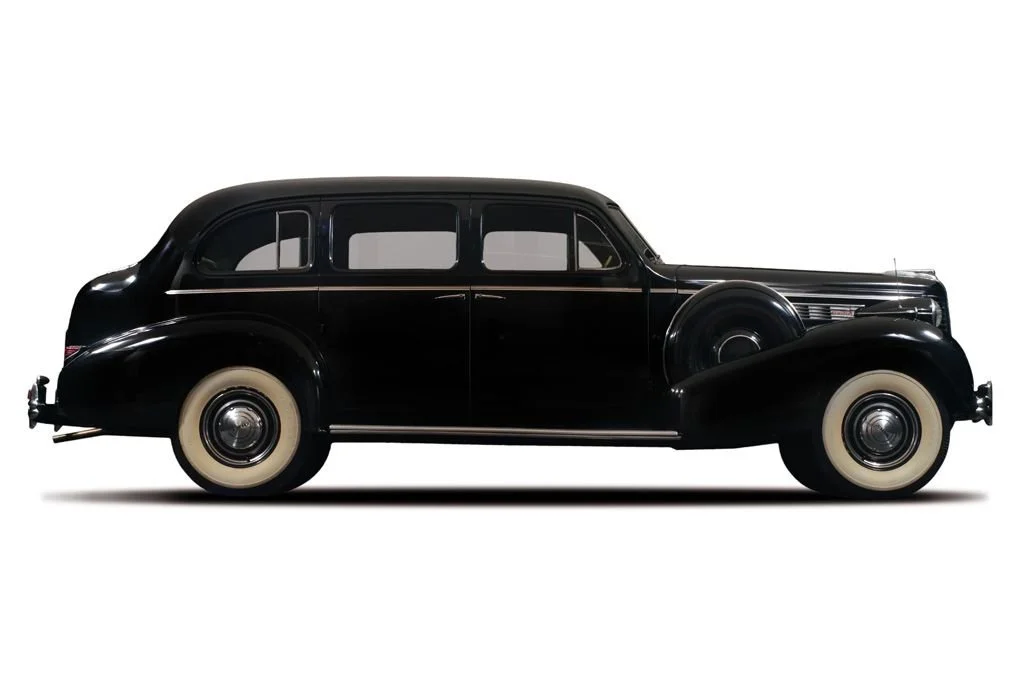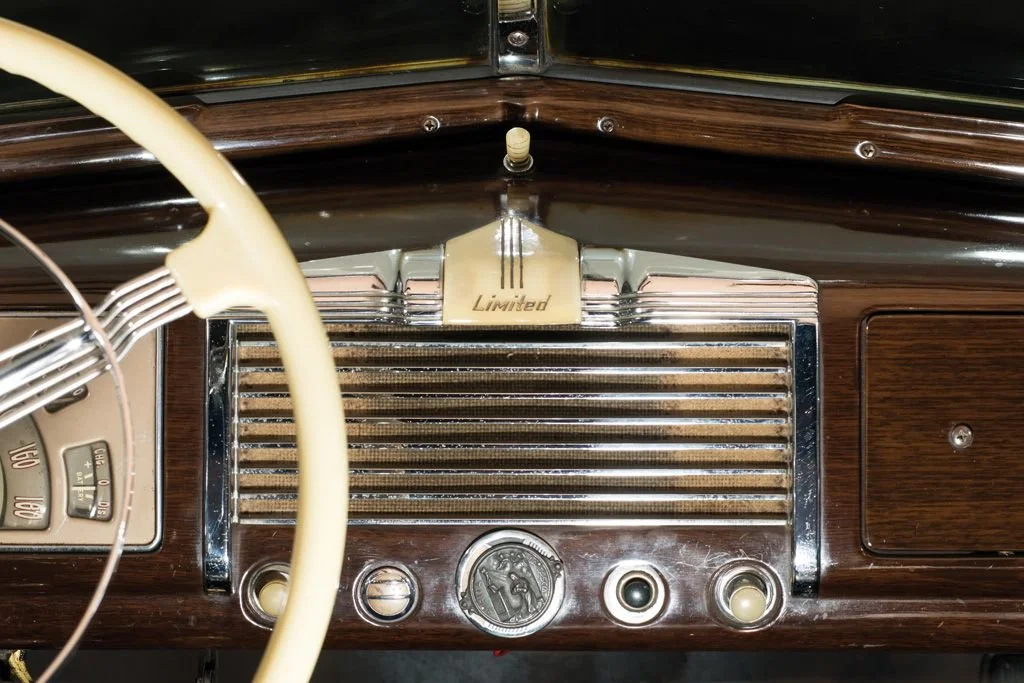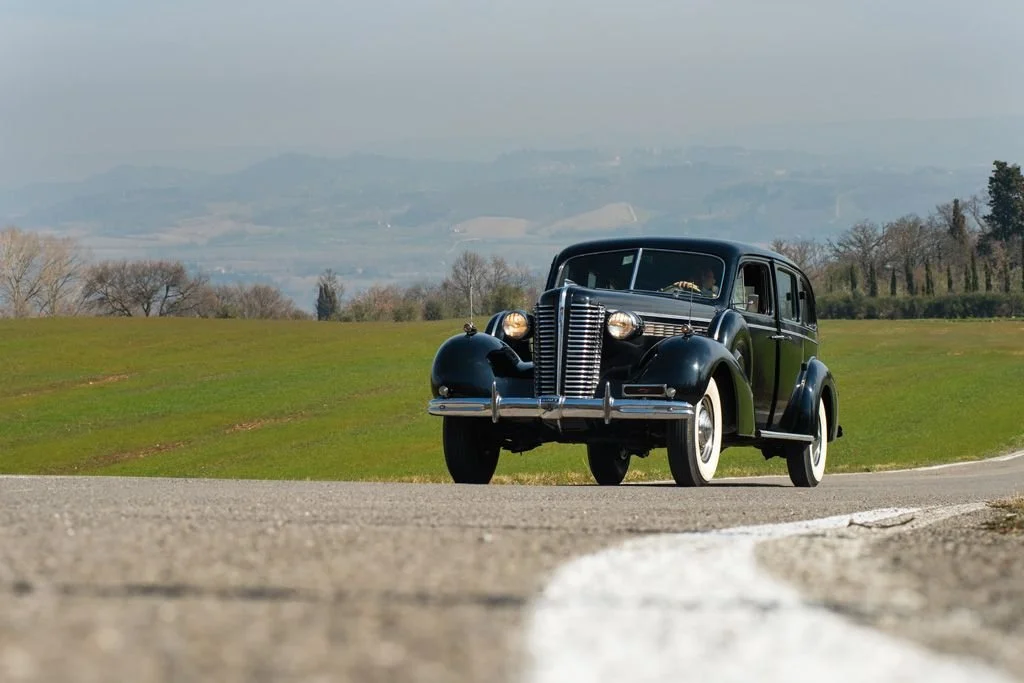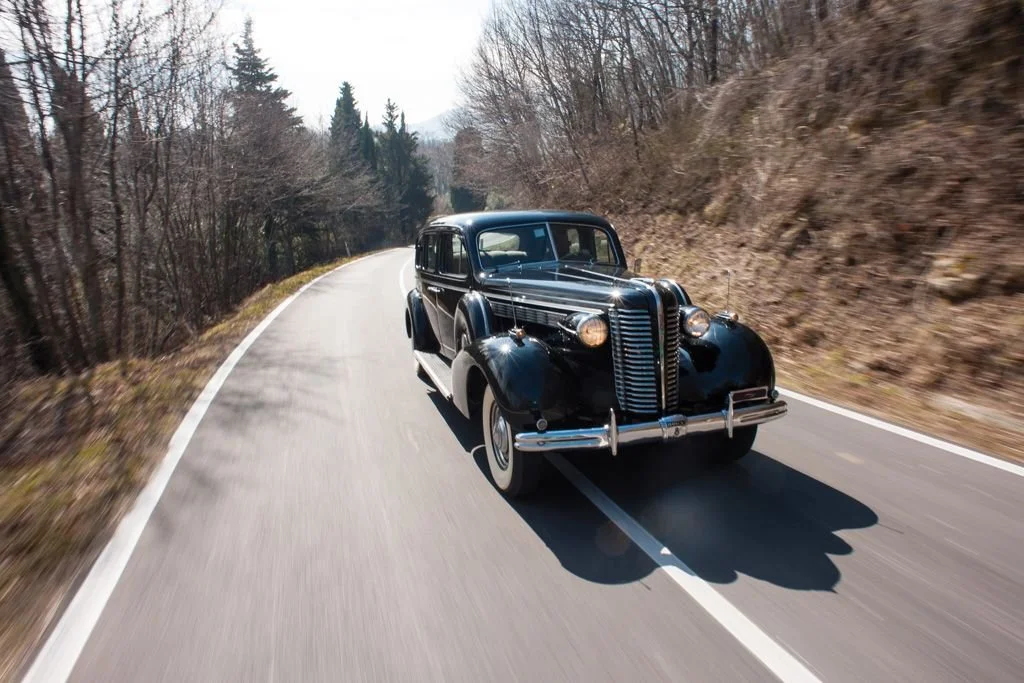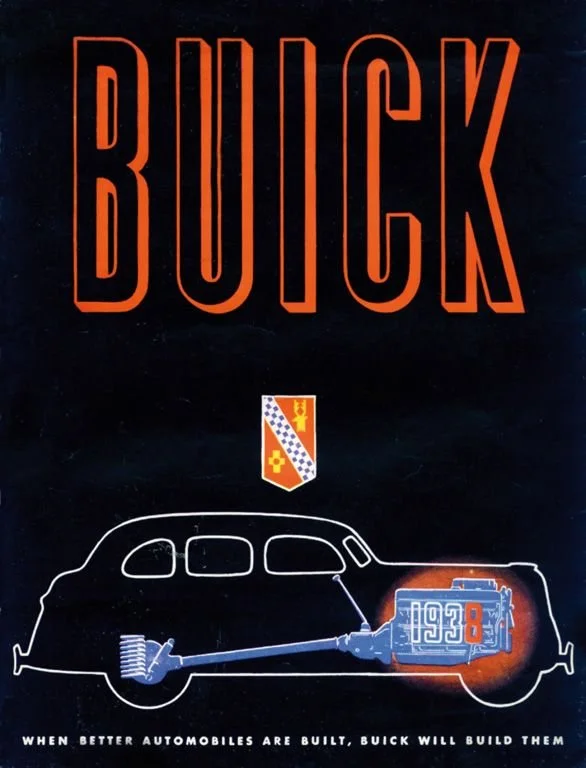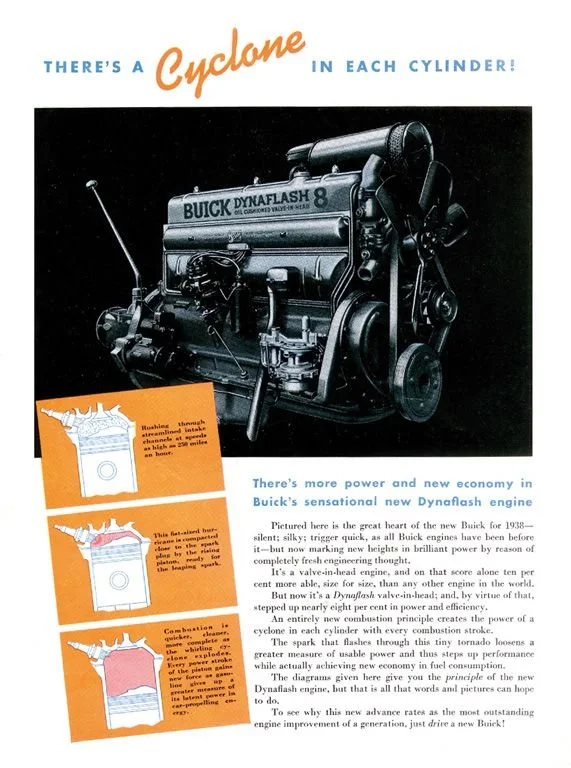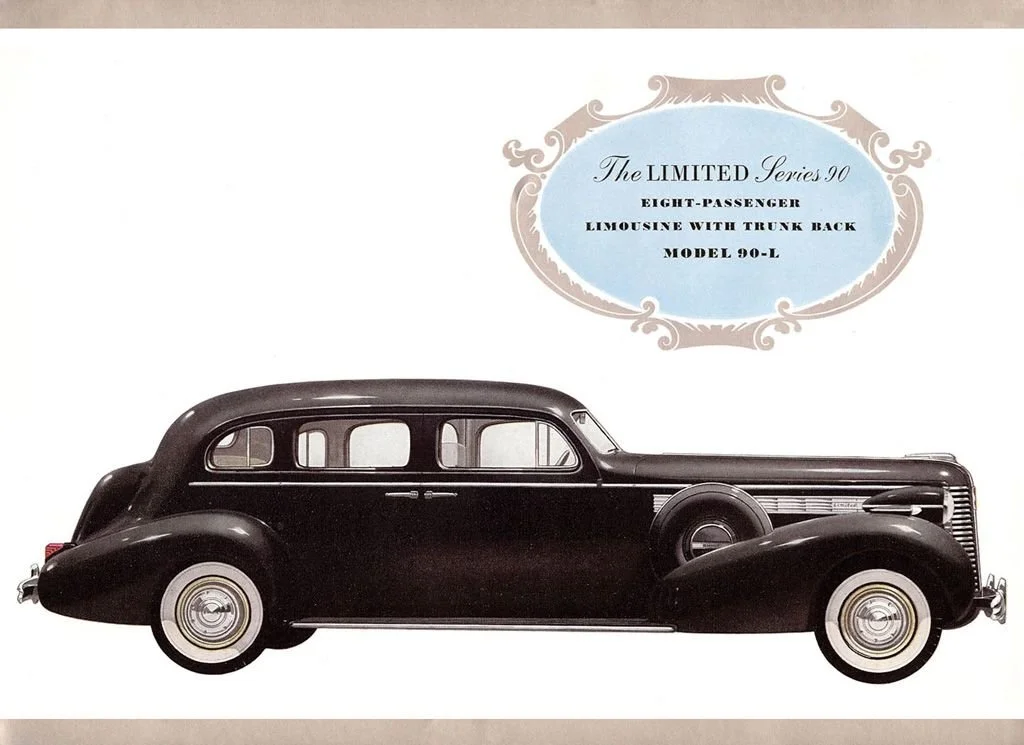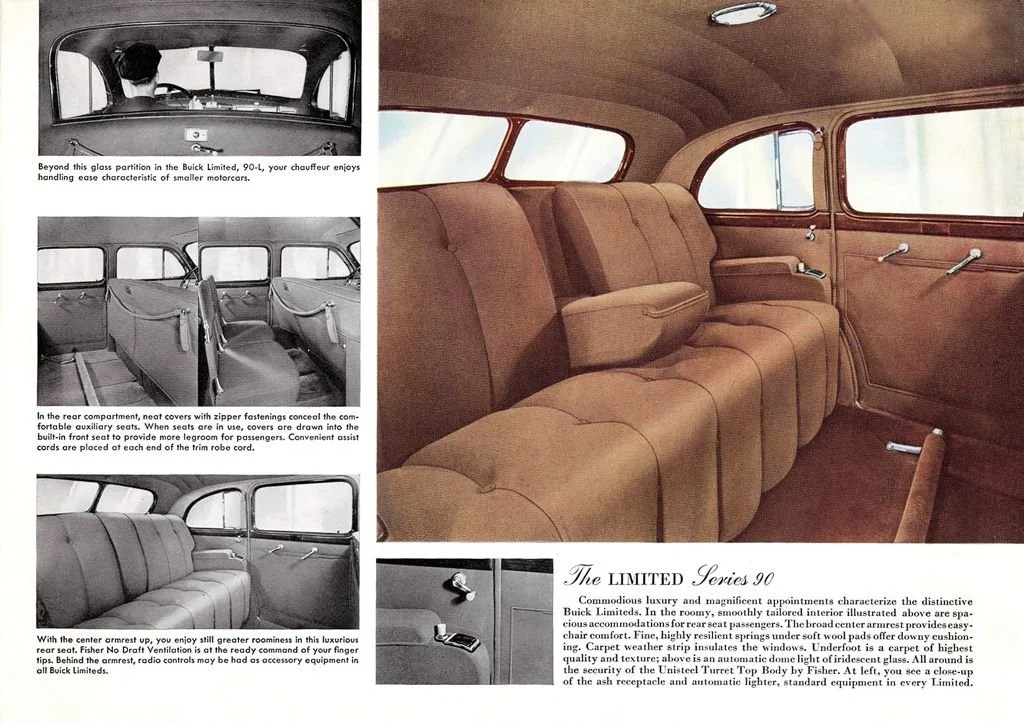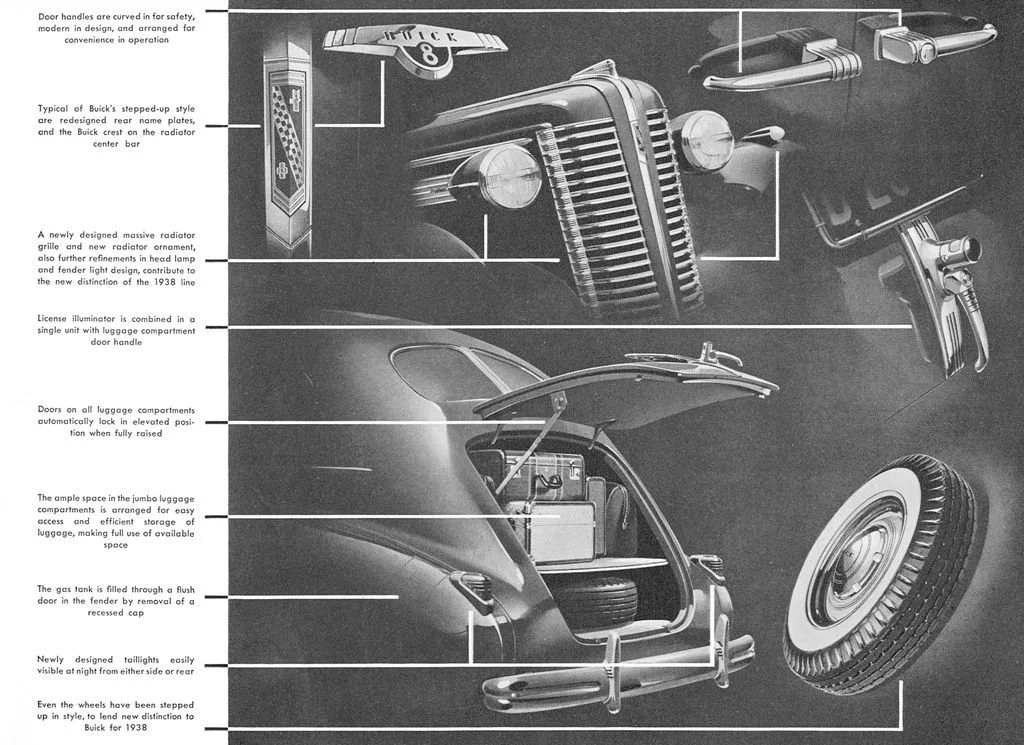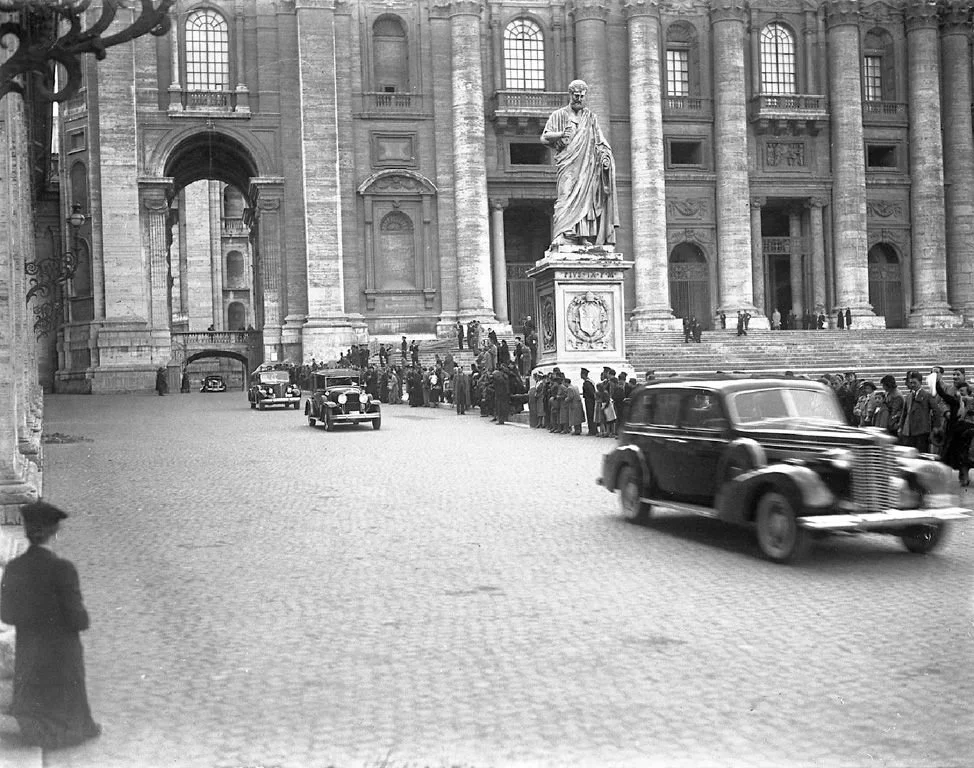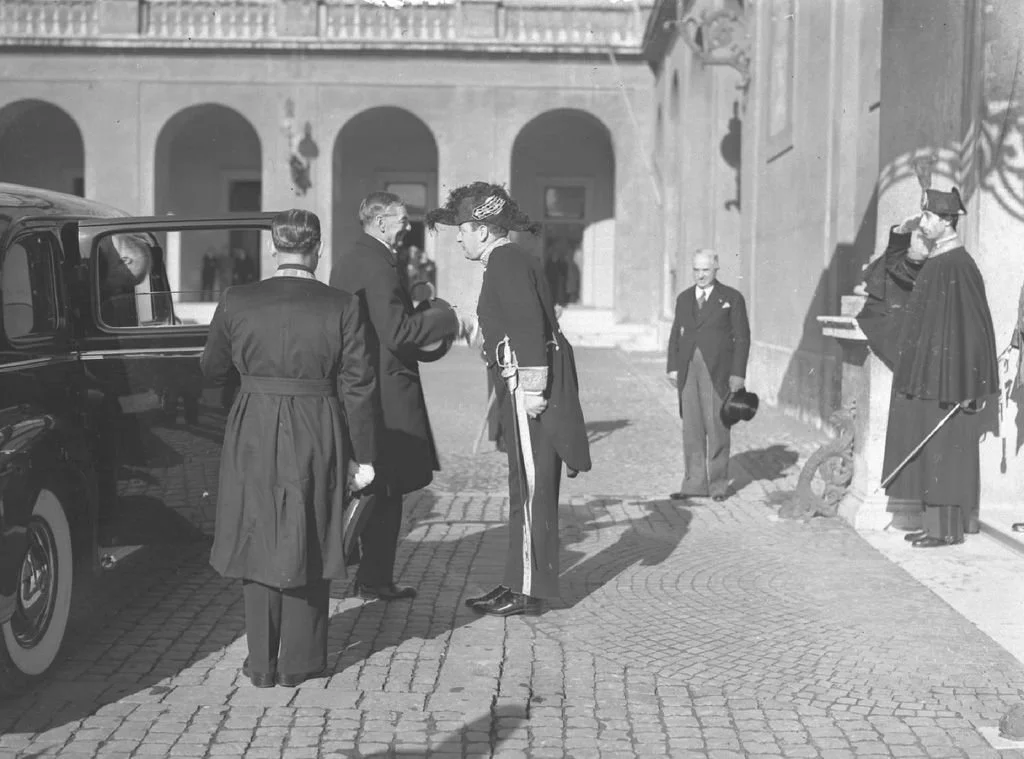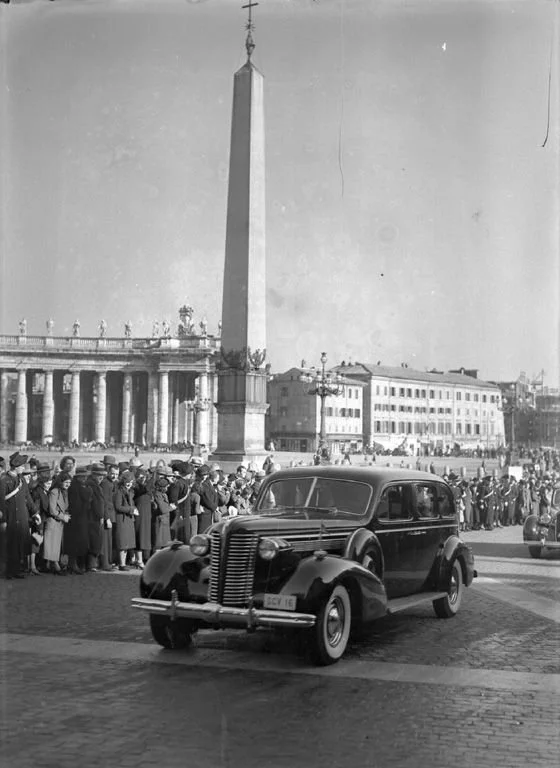-
By uttering the name of the Buick Series 90 Limousine of 1938, we are talking about a truly rare car (only 410 models built). But if we also add that this car belonged to the Vatican, we are truly face to face with a unique rarity. In actual fact, another 1938 Buick exists which was used to transport visiting dignitaries to the Pope, its “twin” car that nowadays also resides in the Nicola Bulgari Collection.
This first model to join our collection, originally bearing the license plate SCV15 (typical registration of the cars of the Vatican State), now has the Rome plates of 1966, the year it was “civilianized” out of the Vatican and purchased by the Nicola Bulgari Collection.
This Limousine has carried illustrious guests over the years: great cardinals, royalty and political leaders from the end of the thirties to the mid-sixties.
Over the years this car has only undergone moderate light restoration work in order to retain its full historic importance.
Included in the documents of the era, in the Nicola Bulgari Collection, there are rare videos and precious photographs illustrating the service of this Buick Limousine during historic events of the Vatican. -
Company
General MotorsWheelbase
140inInterior trim
Dark Gray leather/Beige clothBrakes
front and rear drumsMake
BuickLength
219.5inEngine
inline 8 - 320.2cidTires
7.50x16Model
Limited - Series 90LWidth
79inCarburetor
1 carb. Stromberg AAV-2Original Price
$2,453Body style
4-door LimousineWeight
4653lbsHorsepower
141hp @ 3600rpmProduction
410Model year
1938Exterior paint
BlackTransmission
3-speed manual -
The origins of the Limited name date back to 1936 when Buick added names to its entire model lineup to celebrate the engineering improvements and design advancements over their 1935 models. It shared its chassis with the top-level Cadillac D body vehicles. Buick had released a new line of cars that were technically superior to their predecessors by offering such features as all-steel passenger compartment tops (GM's Turret Top design), improved front suspension, improved hydraulic safety braking system, alloy engine pistons and an improved engine cooling system. Buick's Series 40 was named the Special, the Series 60 was named the Century, the Series 80 was named the Roadmaster, and the Series 90 — Buick's largest and most luxurious vehicle — was named the Limited. The engine was an inline 8 of 320 cu. in. with 120 hp. The Dynaflash valve-in-head straight-eight engine produced 141 horsepower and gave the Limited a smooth and thrifty performance unequaled by former models.
Limiteds were the most expensive Buicks in production, riding on the company's longest wheelbase of 138 in, and the best appointed cars that Buick built. All Limiteds were built at the Buick factory in Flint, Michigan, while all Cadillacs were built in Detroit at the Clark Street Facility. The name Limited was truly appropriate to the cars, which were limited to touring sedans and limousines; its sales too were the smallest of Buick's entire model range.
In 1938, the wheelbase was stretched to 140 inches , and the Limited, along with the Roadmaster, lost its wooden structural members for steel, making them the last Buick passenger cars to rely upon wood components. Inside, one would find commodious luxury and magnificent appointments all contained within the security of the Unisteel Turret Top Body by Fisher. Cushioned seats, high-quality carpet, and an automatic dome light of iridescent glass contributed to the ambience of the Limited Limousine. With a luxurious interior and a smooth ride, one could arrive in style and comfort in a Buick Limited Limousine, while one's chauffeur enjoyed handling ease characteristic of smaller motorcars.
In 1939 Buick products underwent a substantial redesign; however, the Limited's "limited" production merited it to continue using its 1938 body.
Behind the scenes, Cadillac executives lobbied to get the Limited out of production because it infringed on their market. While it was priced in the lower end of its Fleetwood series price point, the Limited almost equaled Cadillac's factory built Imperial Sedan (Limousine), which cost almost four times as much as the Buick, in its appointments. Buick executives fired back that Limited production averaged only 1,561 vehicles per year for model years 1938 through 1940, a drop in the bucket compared to Cadillac's production of its senior cars.
Production of the Limited continued until the eve of World War II, following which Buick dropped its extended wheelbase models, and dropped the Limited nameplate. -
Until 1929 the Vatican had no cars at all, relying on traditional horse-drawn carriages. It was only when it was established as a State that it acquired its first automobile, a Graham-Paige. That car remains in the Vatican museum to this day, but the other pre-war limousines that were used for VIP transport – Buicks, Cadillacs and Packards – were disposed of and eventually acquired by The NB Center.
The history of the Vatican limousines is astonishing. The NB Center’s archive includes photographs of several of them – brand new and still unregistered – being blessed by Pope Pius XI in 1938, of the Cadillacs with Pius XII and John XXIII, and of the cars’ use by notable figures including royalty, heads of state and high-ranking diplomats.
Some of these ex-Vatican cars were found in excellent condition; they were not much used, so their engines were near-perfect. Others fared less well; a Cadillac sold off in the early 1960s ended up in the 1970 movie ‘Patton’ and was in poor shape. One of the Packards was also used in movies and had acquired a different engine and transmission, leaving it with two shift levers. Nevertheless the underlying build quality of the cars is very evident; in some cases the chrome brightwork merely needed polishing.
The skilled and committed NB Center teams in Rome have learned a great deal from their colleagues in Allentown, and the repair and restoration of the Vatican cars were all managed entirely in-house by the mechanical staff led by Sergio Caudai and by the skilled bodyshop team of Carrozzeria A. Rizza.
The limousines have all received sensitive restoration, maintaining as much of their precious originality as possible. These exceptional and historic vehicles should stay in Rome, of course, but The NB Center intends to create a special place for them in the city, separate from the rest of the collection, where their intriguing story may be presented in all its fascinating detail.

